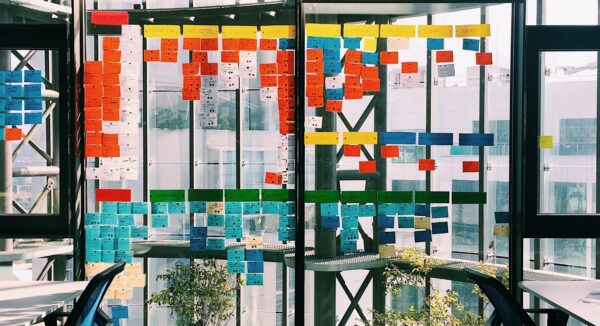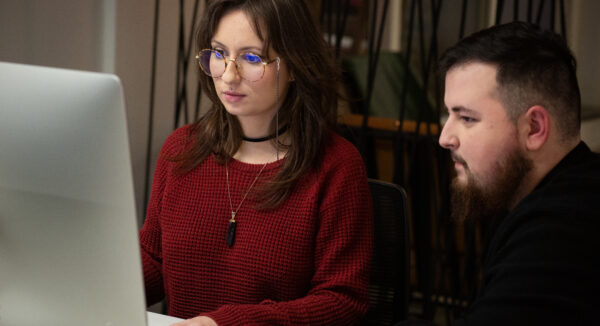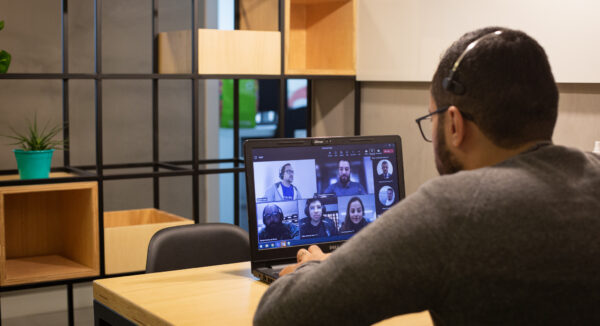
- Product Conception
In the third article in the series on digital product teams, we will cover the role of the Designer. Our objective is to explain why it is important to have a person focused on design and the impact of this work on the team’s results. To this end, we gathered the main questions we received on the subject and formulated answers with our experts.
The first article in this series explored the profiles, roles, and expertise needed in a product team. The second article delved into the Product Owner (PO) universe to understand his role in the development journey. To end the series, in the next article we will address the role of Developers and Testers.
A decade ago, it was rare to see designers working with technology teams to build software. So, what happened since then that made the role of the Designer become so fundamental?
The truth is that the reality in the IT universe has changed a lot in the last decade. Some of these changes are:
These changes have made users more demanding: today they expect a better experience. People want quick responses, easy access to information, uncomplicated processes, consistency across a brand’s various channels, and a clear and inspirational value proposition.
In the past, in a market with few solutions, Design focused on UX (User Experience) emerged as a differentiator on which very innovative brands relied to seek growth. Today, in a market full of products and demanding customers, design has become essential for a successful product.
Actually, Design is much more than that. Since the discipline began to develop in the so-called Modern Design, from the Bauhaus period, there is a definition that design should be concerned with two inseparable issues: form and function.
Within the concept of form, there is indeed the aesthetic component, where beauty is part of the concerns. However, design is also concerned with function:
In other words, Design is not about beautifying a product, but about planning it so that it is both aesthetically and functionally pleasing. For Mira Hennemann, UX/UI Designer at SoftDesign, “design is understood as a project tool that enhances individual and social development, based on the identification and solution of problems; in the same way that it emancipates users from the use of these digital products on a daily basis”.
This very important question leads us to clarify the different areas of Design. The discipline is very broad and includes everything from designing industrial products to creating posts for Instagram, for example. Therefore, it is common not to know exactly what we need.
In a digital product, the subareas of Design that matter most are:
UI Design – is the part that is concerned with creating the interface. In the most common software, the interfaces are screens, but nowadays there are other types, such as voice interfaces. Within this area, we have:
UX Design – is the part concerned about the user’s experience with the product, including:
User Research – is the area dealing with research and data collection, including but not limited to:
It is worth noting that these areas are not completely independent; they interact and influence each other. For example, UI is a part of UX, and UX is not defined without Research. The separation is more for instructive purposes, to help organize all topics of interest.
In addition to these areas, there are still other areas of Design that can be important for a digital product, but that is not part of the product team. For example:
Brand Design – if you are creating a product, you may also need a branding effort, which includes designing the brand’s symbols or logo.
Design of material for product marketing – if you are going to promote your product in the market, you will also need a designer to create advertising material, campaigns, and sales or product presentation materials.
The expected result of the Design work is to improve the following product factors:
This is a question we’ve been asked a few times. Why does the Design person need to be part of the team? Why can’t the Design person act just at the beginning, “create the UX”, with the product team then following the definitions throughout the development?
Well, actually, the design doesn’t “create” the UX. What the Design person initially does is propose a solution that he or she believes is adequate. Experience, however, is what the user actually experiences when using the product.
This is where the iterative nature of product development comes into play: a first version is put to use or tested with a small group of users; feedback is collected, and the product is tweaked to improve the experience.
Therefore, the Design person has a continuous role, iterating and continuously evolving the user experience proposition, in addition to creating the UI of new functionalities. According to Pricila Sales, UX Designer at SoftDesign, among the principles and practices of a designer we have strategic performance, which goes far beyond the initial stage of definition. “We continually seek to identify opportunities, as well as to promote the construction of products that allow a good consumer experience and that provide prominence, generating value for the business”, she emphasizes.
The Design person works very closely with the Product Management person. This duo works together all the time in activities such as:
Each planned solution then needs to be detailed, which requires some solitary work in which the Design person will structure:
In addition, Designers work closely with the team during the development sprint, actively participating in day-to-day activities to clear up doubts and, mainly, to reconcile the proposed Design with the restrictions and possibilities of technology.
To conclude, the last question that we will answer is about the number and specialty of Designers that should compose your product team. In an early-stage product, when only one team is working and you have up to five engineers involved, one design person is likely able to meet the demand. This number is a proportion that is accepted in the market, according to the NN Group’s survey. Also, at this stage the Design person will probably be a generalist, accumulating UI, UX, and Research tasks.
However, as the product evolves, the team will grow and complexity will increase. Therefore, it is normal not only to increase the number of designers but also to start working with people specialized in each area.
In our work process, designers participate in the Conception of new products and throughout the life cycle of Development, performing activities focused on UX, UI, and Research. At SoftDesign, our main mission is to deliver products that will be used, loved and that generate value and in order to achieve this, design work is essential.
If you need help creating useful and desirable products, proposing user experiences, and developing successful products, please contact us using the form below. Together, we will connect technology, design, and strategy!
Experience having a reliable partner to your IT challenges. Let’s talk about our unique approach to discover and deliver outstanding solutions.


